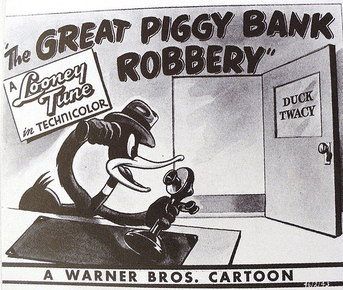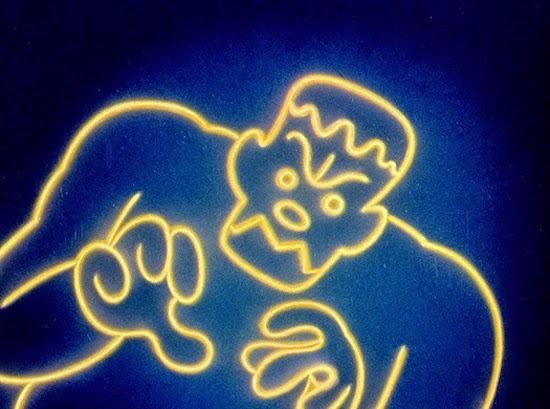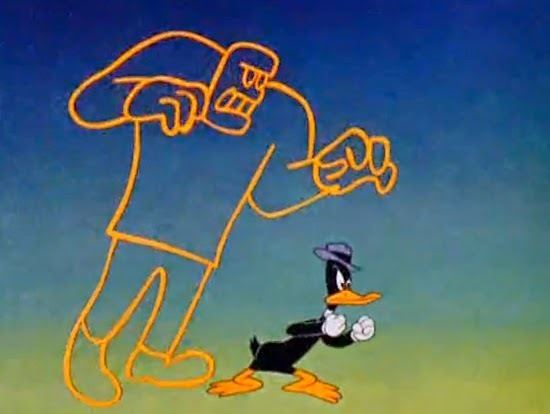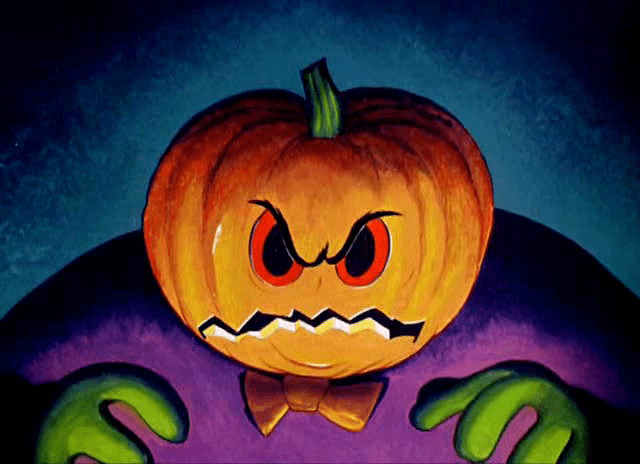The Great Piggy Bank Robbery
6 /10 1 Votes
Film series Looney Tunes Language English | Music director Carl Stalling Duration | |||||||||||||||||||||||||||||||||
 | ||||||||||||||||||||||||||||||||||
Release date July 20, 1946 (USA) Similar movies Looney Tunes movies, Related Bob Clampett movies | ||||||||||||||||||||||||||||||||||
Elder scrolls v skyrim official gameplay trailer
The Great Piggy Bank Robbery is a Warner Brothers Looney Tunes theatrical cartoon short, produced in early 1945, and released in 1946. It was directed by Robert Clampett, and features Daffy Duck in Clampett's penultimate Warner cartoon, produced shortly before he left the studio. The cartoon is largely a parody of the popular Dick Tracy comic book series.
Contents
- Elder scrolls v skyrim official gameplay trailer
- Fast five 9 10 movie clip taking the vault 2011 hd
- Plot
- Allusions and influence
- Legacy
- References

Fast five 9 10 movie clip taking the vault 2011 hd
Plot

On a farm, Daffy waits for his new Dick Tracy comic book to the tune of Raymond Scott's song "Powerhouse". The mailman then arrives and he gets the comic book. To the tune of Franz von Suppé's Poet and Peasant overture, he sprints to a corner of the farm and reads it. Then, he wishes to become Dick Tracy and then knocks himself out by accidentally punching himself while imagining fighting criminals.

He then imagines himself to be "Duck Twacy, the famous duck-tec-a-tive." Ignoring a piggy bank theft crime wave, he goes into action when he learns that his own piggy bank has been stolen from his secure safe. He decides to call Duck Twacy and calls himself before remembering he is Duck Twacy. He calls a taxi to follow a car but it leaves without him, to which he replies 'Keeps them on their toes.' Daffy while looking through a magnifying glass at the pavement, at one point bumps into one Sherlock Holmes who is doing the same thing in the opposite direction, and tells him he is working on this side of the street.
Daffy's search leads him to a tram with Porky as the driver leading to the gangsters' not-so-secret hideout. He falls through a trapdoor when he rings the bell and follows footprints, even climbing up a wall making him think the culprit is the Human Fly, to a mouse-hole. He says the culprit is Mouse Man and demands "Come out of there, you rat!" and who should oblige but a huge, muscular rat which towers over him. Gulping in fear, Daffy timidly tells him to go back in again and so he does. He runs away but faces off against all the dangerous criminals in town (many of which are parodies of Dick Tracy's rogues gallery) consisting of Snake Eyes (spoof of B.B. Eyes who has dice for eyes), 88 Teeth (spoof of 88 Keys with piano keys for teeth), Hammerhead (a criminal with a hammer for a head), Pussycat Puss (a monochromatic gangster version of Sylvester), Bat Man (an anthropomorphic baseball bat who is a name parody of the real Batman where DC Comics is now owned by WB), Doubleheader (a two-headed spoof of Tulza "Haf-and-Haf" Tuzon), Pickle Puss (a pickle spoof of Pruneface), Pumpkinhead (a criminal with a pumpkin for a head), Neon Noodle (a neon spoof of Frankenstein), Jukebox Jaw (a criminal with a jukebox speaker for a jaw and a turntable on top of his head), Wolfman (an anthropomorphic wolf criminal), Rubberhead (a pencil eraser-headed criminal), and a host of other unnamed grotesque criminals. He declares "You're all under arrest!" The villains then roar at our hero and the chase begins.
In one sequence, the bad guys are seen using well-known Dick Tracy villain Flattop's head as an airstrip with planes taking off. When Daffy is trapped against a wall, Rubberhead "rubs him out" with his head as an eraser but Daffy appears at the door. Pumpkinhead meanwhile moves in with submachine gun blazing. Daffy tosses a hand grenade directly to Pumpkinhead's head and he becomes a stack of pumpkin pies.
After being chased about, Daffy eventually turns the tables on the villains and traps them inside a hallway closet. He slams the door shut on them and eradicates the group with sustained fire from a Tommy gun.
He faces one last adversary, Neon Noodle (who survived because he is a mere neon outline with no physical "center" for Daffy to shoot), whom Daffy defeats by turning him into a neon sign that reads "Eat at Joe's" (a standard WB cartoon gag). He then finds the missing piggy banks, including his own. He begins to kiss his bank, but since he is dreaming he doesn't realize that he is on the farm again, kissing a real female pig. The plump yet slightly curvacious pig is rather smitten by Daffy since she believes he's trying to woo her with the barrage of smooches he plants all around her face. He wraps his kisses up with a peck to the cute pig's little nose. So in an elegant female voice she says "Shall we dance?" and lovingly kisses him right in the mouth. Now wide awake, Daffy wipes the kiss away disgustedly and runs away. The lady pig says "I love that duck!" and laughs.
Allusions and influence
Legacy
Animation historian Steve Schneider said of this picture:
The Great Piggy Bank Robbery was the first of several cartoons in which Daffy Duck would do a parody of a well-known character, but the only one in which he was actually competent. In other take-offs, such as The Scarlet Pumpernickel, he was somewhat buffoonish, though still able to intimidate the bad guys. But, in later stories such as Stuporduck, Boston Quackie, Robin Hood Daffy and Deduce, You Say?? (in which he played "Doorlock Holmes"), Daffy was hopelessly overmatched.
This was the first cartoon to air on Cartoon Network, when the 24-hour cartoon channel launched on October 1, 1992.
In 1994 it was voted #16 of the 50 Greatest Cartoons of all time by members of the animation field.
